Introduction to Science in the Galactic Plane
Lesson 8: Making a Map using a Radio Telescope as a Camera

QUESTION: How to make a map with a single receiver (pixel) camera?
Radio telescopes often have only a single receiver operating at a time. Yet is possible to make detailed pictures of the radio sky, as show by the GPA images. In this lesson, the method of making images with a single pixel camera is explained.
Radio telescopes often have only one receiver (pixel) because of the expense of creating receivers (> $50,000 each). Also in the case of a tracking station, such as the antenna system used for the GPA survey, all of the signal comes from a single location in the sky, so that only one receiver is needed. It is possible to make maps with a single receiver, by making measurements one at a time over a region of interest. In this lesson, the student is shown how an image can be created by gathering a set of samples on a grid and combining the samples to produce an image.
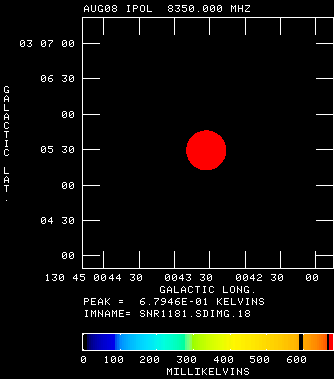
|
Single observation at the location of supernova remnant that occurred
in 1181 AD..
The radio source in this example is the remnant of a supernova explosion
a star that was seen in year 1181 AD,
and was witnessed by Chinese astronomers.
With a single receiver, only a single brightness measurement can be made at one time, as is shown in the image. What is in the region nearby? The observer must point the telescope at other directions to find out. |
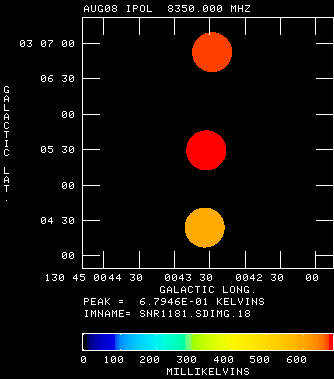
|
Three adjacent samples of the sky.
The GPA survey is made by scanning the telescope continuously and taking samples of the sky 8 times a second. The 3 samples shown in this example were taken 1/8 of a second apart. The brightest pixel (red) is at the location of the center of the remnant. These three pixels have similar brightness because the samples are all within one telescope beam width. |
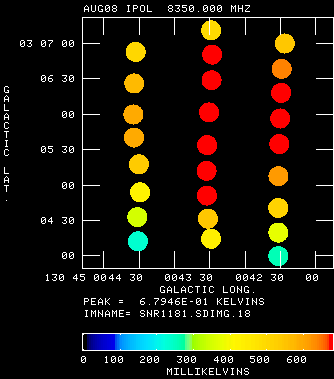
|
Three nearby rows of samples at nearby locations.
When making an image of a region with a single receiver telescope, the telescope stops scanning at the edge of the region, is moved slightly in one direction and then the scanning motion is repeated. Thlsis figure shows a few samples from each of the three rows nearest the center of the supernova. The samples in adjacent rows have similar brightness because the rows are separated by less than one telescope beam width. Red indicates more intensity, yellow less and blue indicates very weak radio brightness. |
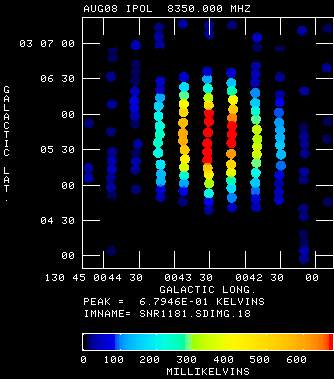
|
10 nearby rows of samples at nearby locations.
Since the supernova remnant has had less than 1000 years since the explosion to expand, it covers only a small region of the sky. Notice that nearby rows show little signal. Notice that the intensity of signals at locations distant from the center of the supernova is low. |
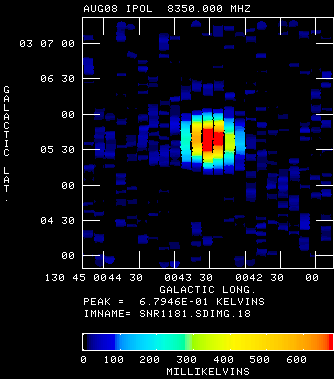
| 20 nearby rows of samples at nearby locations. Since the supernova remnant has had less than 1000 years since the explosion to expand, it covers only a small region of the sky. Notice that nearby rows show little signal. |
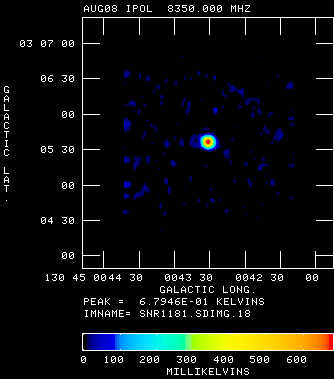
| Fully sampled region near supernova 1181. The map of the entire region surrounding the supernova remnant of 1181 shows no other bright radio sources nearby. |

|
|
|
|
| Previous | Up | Next |
2000-08-09